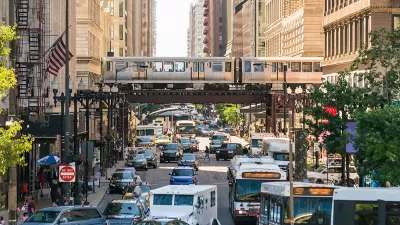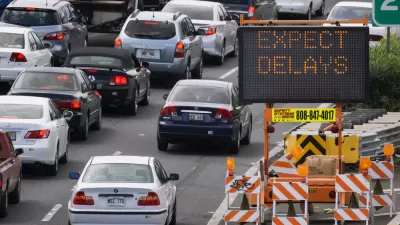In this column, Richard Florida argues the decline in the popularity of suburbs is not just a product of rising oil prices, but a result of a new "spatial fix" that is reorganizing how and where people live their lives.
"One of the few things increasing as fast as the price of oil lately has been the amount of commentary linking higher energy costs to the death of suburbia. Clearly, higher gas prices have affected where people want – or can afford – to live. Just as the demand for SUVs plummets and consumers have finally begun to see the point of hybrids, people are turning away from sprawling exurbs toward urban neighbourhoods and inner suburbs."
"But what's happening here goes a lot deeper than the end of cheap oil. We are now passing through the early development of a wholly new geographic order – what geographers call "the spatial fix" – of which the move back toward the city is just one part."
"Suburbanization was the spatial fix for the industrial age – the geographic expression of mass production. Low-cost mortgages, massive highway systems and suburban infrastructure projects fueled the industrial engine of postwar capitalism, propelling demand for cars, appliances and all sorts of industrial goods."
"The creative economy is giving rise to a new spatial fix and a very different geography – the contours of which are only now emerging."
FULL STORY: The days of urban sprawl are over ...

Study: Maui’s Plan to Convert Vacation Rentals to Long-Term Housing Could Cause Nearly $1 Billion Economic Loss
The plan would reduce visitor accommodation by 25,% resulting in 1,900 jobs lost.

North Texas Transit Leaders Tout Benefits of TOD for Growing Region
At a summit focused on transit-oriented development, policymakers discussed how North Texas’ expanded light rail system can serve as a tool for economic growth.

Why Should We Subsidize Public Transportation?
Many public transit agencies face financial stress due to rising costs, declining fare revenue, and declining subsidies. Transit advocates must provide a strong business case for increasing public transit funding.

How to Make US Trains Faster
Changes to boarding platforms and a switch to electric trains could improve U.S. passenger rail service without the added cost of high-speed rail.

Columbia’s Revitalized ‘Loop’ Is a Hub for Local Entrepreneurs
A focus on small businesses is helping a commercial corridor in Columbia, Missouri thrive.

Invasive Insect Threatens Minnesota’s Ash Forests
The Emerald Ash Borer is a rapidly spreading invasive pest threatening Minnesota’s ash trees, and homeowners are encouraged to plant diverse replacement species, avoid moving ash firewood, and monitor for signs of infestation.
Urban Design for Planners 1: Software Tools
This six-course series explores essential urban design concepts using open source software and equips planners with the tools they need to participate fully in the urban design process.
Planning for Universal Design
Learn the tools for implementing Universal Design in planning regulations.
City of Santa Clarita
Ascent Environmental
Institute for Housing and Urban Development Studies (IHS)
City of Grandview
Harvard GSD Executive Education
Toledo-Lucas County Plan Commissions
Salt Lake City
NYU Wagner Graduate School of Public Service





























